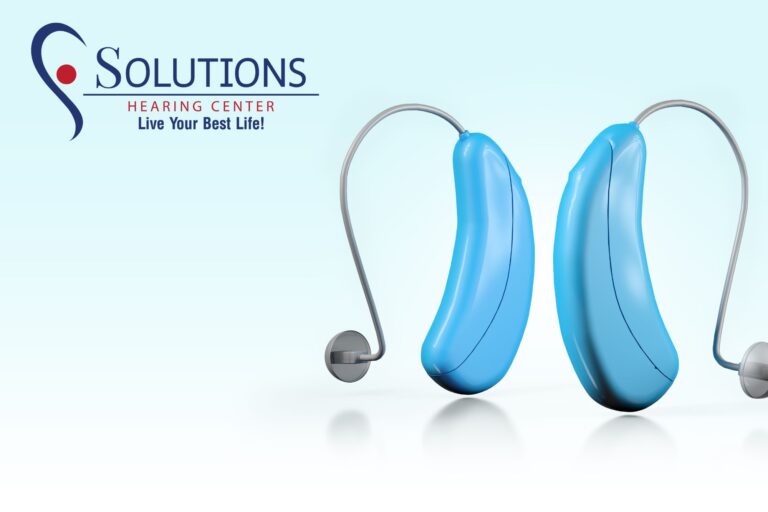Living with hearing loss can pose various challenges, affecting our ability to communicate and fully engage in the world around us. Thankfully, modern hearing aids have revolutionized the way we experience sound, improving our quality of life. With a wide range of options available, choosing the right hearing aid can be overwhelming. In this article, we will dive into the essential features and considerations when selecting a hearing aid, including battery life, Bluetooth connectivity, telecoil technology, style and design options, and additional features and accessories.
Battery Life: Powering Your Hearing Aid
One crucial consideration when exploring hearing aid options is battery life. Hearing aids typically use disposable batteries, with the most common types being zinc-air batteries, silver-zinc batteries, and rechargeable batteries. Zinc-air batteries are the most widely used and readily available, providing a reliable power source for your hearing aids. Silver-zinc batteries offer a longer lifespan but can be more expensive. Rechargeable batteries, on the other hand, provide convenience by eliminating the need for frequent battery replacements.
When comparing battery life, it’s important to note that it varies depending on the type of hearing aid and usage patterns. On average, zinc-air batteries last between 5 to 14 days, silver-zinc batteries last up to 30 hours per charge, while rechargeable batteries can provide a full day of use on a single charge. To maximize battery life, consider turning off your hearing aids when not in use and optimizing settings for energy efficiency.
Bluetooth Connectivity: Seamless Connectivity for Enhanced Functionality
Bluetooth technology has revolutionized the way we connect and interact with devices, and hearing aids are no exception. Bluetooth connectivity allows for seamless integration with various audio devices such as smartphones, televisions, and music players. By connecting your hearing aids to compatible devices, you can stream phone calls, music, and other audio directly to your ears.
The benefits of Bluetooth connectivity in hearing aids are immense. Firstly, it enhances sound quality by reducing background noise and providing a direct stream of audio into your hearing aids. This ensures clear, crisp sound for better understanding in challenging listening environments. Additionally, Bluetooth connectivity enhances convenience, as you can control your hearing aid settings and adjust the volume through smartphone apps.
Telecoil Technology: Clear Sound in Public Spaces
Telecoil technology is a feature found in many hearing aids that helps users effectively navigate public spaces, such as theaters, places of worship, and conference halls. A telecoil is a tiny copper wire coiled within the hearing aid that picks up magnetic signals from compatible sound systems.
By switching to the telecoil mode, users can cut out background noise and directly receive sound from the sound system. This results in a clearer, more intelligible sound, improving the overall listening experience. Telecoil technology is particularly beneficial in environments where sound may be distorted or masked by background noise.
Style and Design Options: Finding Your Perfect Fit
Hearing aids come in a variety of styles to suit personal preferences and unique hearing needs. The two main categories are behind-the-ear (BTE) and in-the-ear (ITE) styles. BTE hearing aids sit comfortably behind the ear, with a tube or wire connecting to a customized earmold or earpiece inside the ear. ITE hearing aids, on the other hand, are custom-made to fit directly inside the ear.
Choosing the right style depends on factors such as the degree of hearing loss, dexterity, and cosmetic preferences. BTE hearing aids often provide more power and amplified sound compared to ITE styles. However, ITE hearing aids are more discreet and can be a better fit for those concerned about visibility. Many manufacturers also offer a range of color options and customization features, allowing you to personalize your hearing aids to match your style and personality.
Additional Features and Accessories: Tailoring Your Experience
Apart from the core features mentioned above, hearing aids may also come with additional features and accessories to enhance their functionality. These include noise reduction technology, directional microphones, and feedback cancellation algorithms. Noise reduction technology helps filter out background noise, allowing for improved speech understanding even in noisy environments.
Directional microphones focus on sounds coming from specific directions, helping users better distinguish speech from competing sounds. Feedback cancellation algorithms minimize the occurrence of whistling or feedback noises, providing a more comfortable listening experience.
In addition to features, hearing aids can be paired with accessories that further enhance their usability. Remote controls allow you to make adjustments without touching the hearing aids, while smartphone apps provide convenient control options through your phone. These accessories empower users with more control and adaptability to match their specific hearing preferences.
Conclusion: Navigating the World of Modern Hearing Aid Options
Choosing the right hearing aid is a personal journey that should be guided by an experienced hearing care professional. By considering factors such as battery life, Bluetooth connectivity, telecoil technology, style and design options, additional features, and accessories, you can find the perfect hearing aid to meet your individual needs and enhance your quality of life.
Remember, hearing aids have the power to transform your listening experience, allowing you to reconnect with the sounds and conversations that matter most. If you or a loved one are experiencing hearing loss, don’t hesitate to book an appointment with us so we can provide personalized recommendations and assist you in finding the perfect hearing solution.
Embrace the world of modern hearing aid options, and rediscover the joys of hearing every precious moment.

